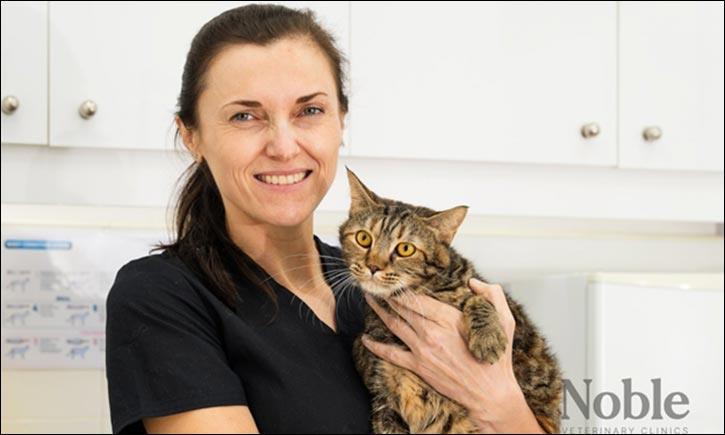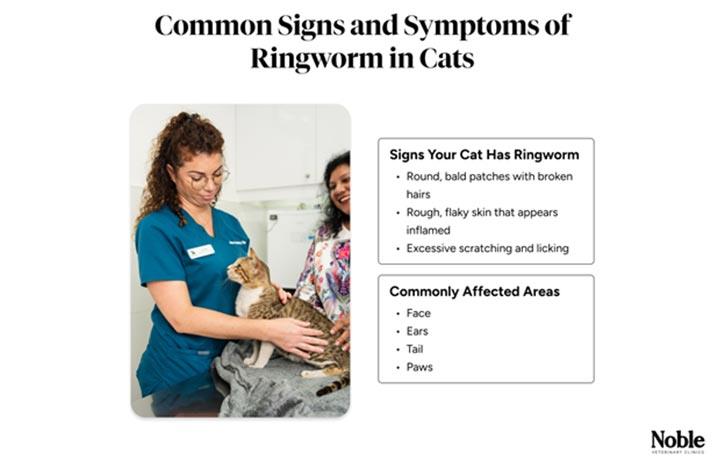
What Is Ringworm In Cats: Causes, Symptoms, And Treatment

What is Ringworm in Cats: Causes, Symptoms, and Treatment
Ringworm in cats is an illness that affects their skin, hair, and claws. It is not caused by any worm, despite its name. This is a fungal infection that attacks cats, especially kittens, seniors, and those with weak immune systems.
Ringworm affects not only cats but also other pets and humans. As a cat parent in Dubai, you must know how to prevent your feline companions from contracting this highly contagious infection.
A group of fungi called dermatophytes cause ringworm in cats. They feed off the keratin found on a cat's hair, skin, and claws. A common fungus responsible for ringworm in cats also affects dogs and humans.
Cats can get infected by ringworm through direct contact with an infected animal or any contaminated surface. The spores can survive without a host for more than a year. Cats that live in unsanitary areas, especially those with other animals, are at high risk of contracting ringworm.
Symptoms of Ringworm in CatsRingworm symptoms in cats can be mild or severe. Sometimes, cats don't have any signs that they're infected. Understanding the signs of ringworm can help you detect it immediately so you can bring your cat to a nearby vet clinic in Dubai .
There are three signs of ringworm to watch out for:
Circular patches of hair loss and broken hairs that may vary in size.
Scaly, crusty skin that appears swollen and red at the edges.
Excessive grooming behaviour caused by itchiness from the fungal infection.
To check if your cat has ringworm, check the most commonly affected areas: the face, ears, tail, paws, and claws.
Look for any signs of balding, inflammation, or broken hair. Balding and inflammation can be difficult to detect in long-haired cats, so you might need help from a professional vet.
Diagnosing Ringworm in CatsCat owners can find the initial signs of ringworm. However, veterinarians use different methods to diagnose the infection.
One of the tools vets use is the Wood's lamp. It is a special equipment that emits ultraviolet light. Using this tool, the fungi will appear yellow-green.
However, not all types of ringworm fungi will appear under UV light. This is why vets also conduct other diagnostic methods like a fungal culture, involving samples of hair and skin scrapings from a cat to be tested in a lab.
Treatment for Ringworm in CatsOnce the vet confirms that a cat has ringworm, a tailored treatment plan will be created to treat the infection.
Here are the different treatment options vets may recommend and give an infected cat.
Topicals: Antifungal creams, ointments, and shampoos are commonly prescribed to cats with ringworm. This treatment can be applied directly to the infected areas on the cat's body.
Oral Medications: Vets may also prescribe oral medications to combat the fungal infection. These are usually available in tablet form, but liquid antifungal medicines are also available for cats with difficulty swallowing tablets.
Environmental Cleaning: Infected cats can contaminate their living space and other areas they visit with fungal spores. That's why vets often advise cat owners with infected pets to disinfect the areas where the cat spends time.
Before your cat gets ringworm, it's best to use preventive methods to minimize the risk of infection. Here are some suggestions that you can follow to protect yourself and your pet.
Keep Your Home Clean: Regularly clean your home, especially where your cat likes to hang out. You can also hire cleaning services in Dubai to thoroughly disinfect your house.
Clean and Sanitise Grooming Tools: Any tool you use for grooming your cats like brushes should be sanitised regularly.
Boost Your Cat's Health: Your cat's risk of infection will be low if it eats nutritious food and has updated vaccinations.
Practice Cautious Socialisation: Cats need to socialize for their mental and emotional health. However, they should be cautious of the animals they encounter so they won't contract the fungal infection.
By being a responsible and proactive cat owner, you can prevent ringworm and other serious diseases in your cat.
Frequently Asked Questions How do cats get ringworm?Cats can get ringworm from direct contact with an infected animal, contaminated surfaces, and humans carrying fungal spores. The spores can live for about 18 months in the environment, making it easy for cats to get infected.
Can ringworm be passed to humans?Yes, ringworm can be passed on to humans because it's zoonotic. People with weak immune systems, like kids, are more prone to infection.
How long does ringworm last in cats?Ringworm can last for a few weeks to a couple of months in cats. This will depend on how severe the infection is and how early proper treatments are given to the infected cat.

Legal Disclaimer:
MENAFN provides the
information “as is” without warranty of any kind. We do not accept
any responsibility or liability for the accuracy, content, images,
videos, licenses, completeness, legality, or reliability of the information
contained in this article. If you have any complaints or copyright
issues related to this article, kindly contact the provider above.


















Comments
No comment